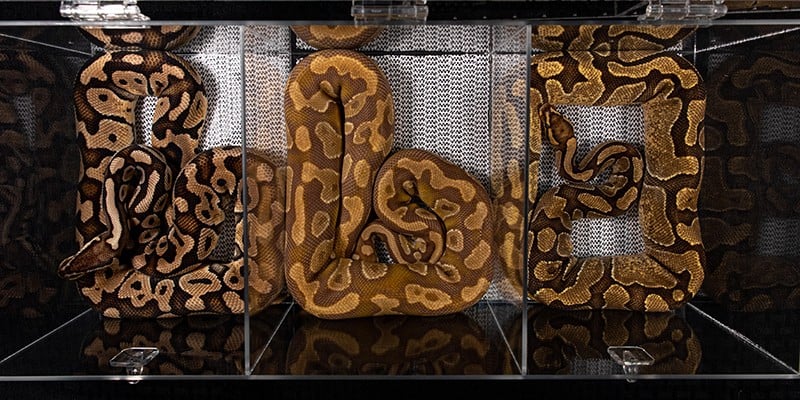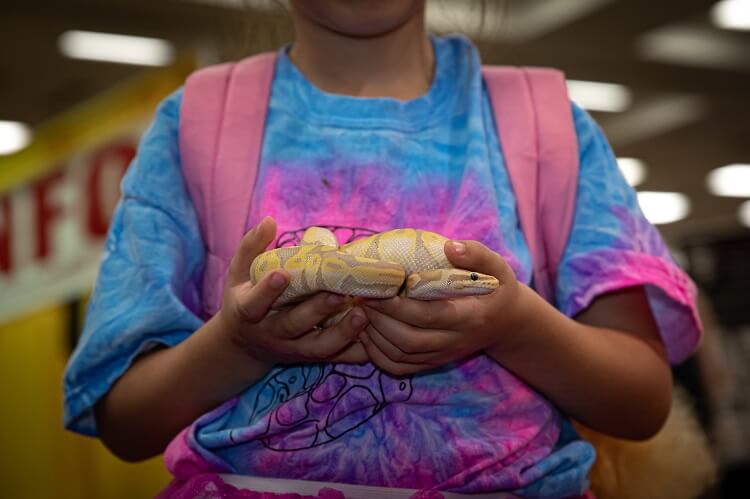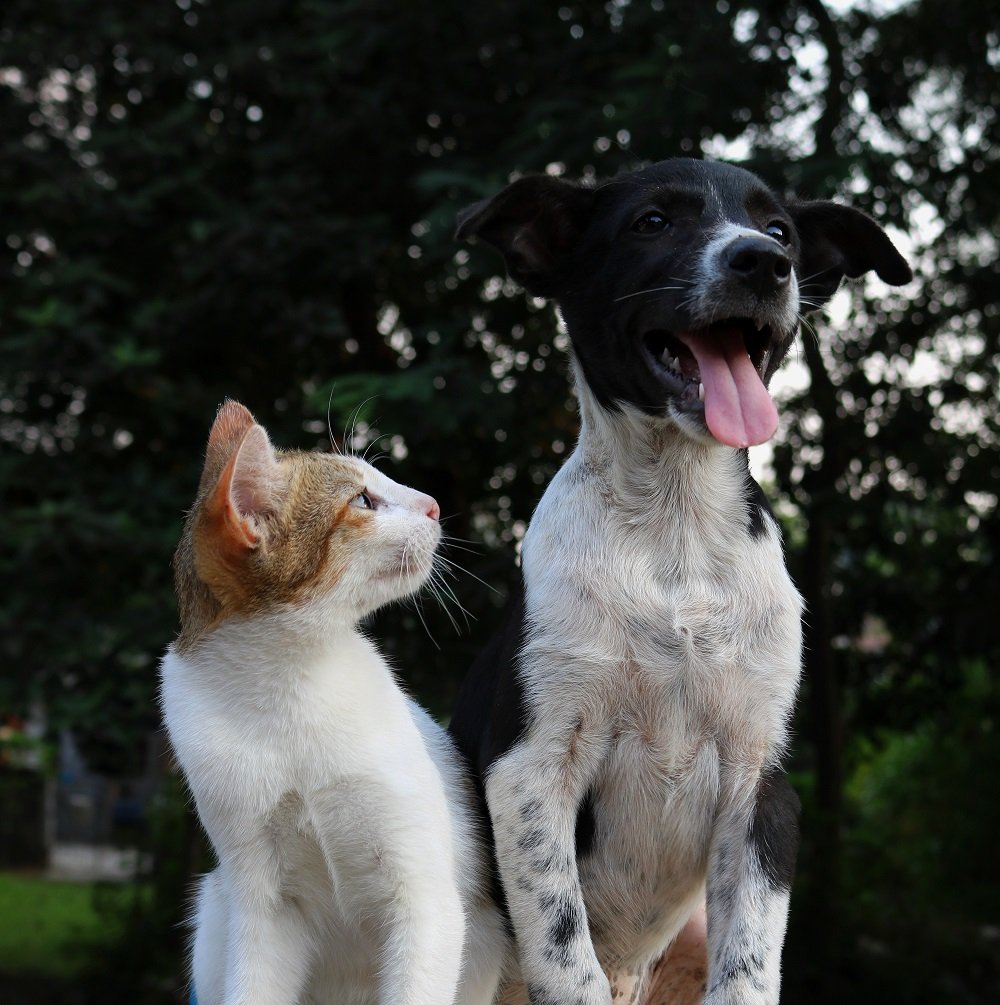
Looking to buy a pet snake?
Wildlife, Not Pets.
Snakes are one of the most commonly kept exotic pets. Ball pythons have risen to the top as one the most popular species of snake to be kept as pets, although corn snakes, boa constrictors and king snakes are also popular. We know people purchase snakes as pets because they love snakes and most owners want to give them the best lives possible. We understand because we love animals too. Unfortunately, many owners are misinformed and unaware that keeping snakes is inherently cruel, difficult and potentially dangerous.
Snakes are wild animals
Snakes, such as Ball pythons, are wild animals and not domesticated; whether poached from the wild or bred in captivity they remain wild animals with their natural instincts intact. The process of domestication occurs over thousands of years through selective breeding of specific traits that will make an animal more suitable to live alongside humans. We see this in cats, dogs and farm animals like horses and cows, but domestication has not occurred with reptiles.
Snakes suffer before reaching your home
The journey for a wild snake in the exotic pet trade is cruel – and often deadly. Poached from the wild or bred in captivity, these animals suffer at every stage of the trade. Often, they’re shipped huge distances, and end up in places vastly different from their natural habitat.
Taken From The Wild
Many snakes sold into the “exotic” pet trade come directly from the wild. The IUCN identifies the international pet trade as the biggest threat for Ball pythons. Every year, approximately 100,000 Ball pythons are taken from West Africa to be sold into the pet trade.
Captive Bred - Snake Farming
The snake breeding industry causes its own set of problems. Snakes farmed on ranches in West Africa are, in theory, pregnant females, eggs or juveniles caught in the wild brought to ‘farms’ or ‘ranches,’ where offspring are hatched and reared so they can be sold as pets. Investigations show that hunters for the ranches may target all Ball pythons, regardless of age or sex and recent studies also raise concerns that hunters may also be involved with capturing other types of snakes for bushmeat, medicine and the pet trade. Snake ranches further undermine the wild populations by releasing snakes into the wild which can introduce diseases and cause genetic pollution.
The snakes are bred in unnatural and intensive conditions and the selective breeding that takes place often impacts physical and mental health.
Captive Bred - Specialist Breeders
Specialist breeders are not a solution. Snakes are bred in unnatural and intensive conditions and the selective breeding that takes place, including inbreeding, can impact the physical and mental health of individual snakes. This is done to create snakes morphs; snakes with scale patterns and colours that don’t exist.
Also, the breeding of snakes manipulates the gene pool when breeders inbreed the animals, creating an ongoing demand for wild caught species to replenish the gene pool.
Being born in captivity and having an unusual colour does not make snakes domesticated - although they may become tame to the touch of humans, they are still wild animals. Their behaviours and needs are equal to their wild-born counterparts.

A spotlight on morphs
Breeders often selectively breed snakes to produce certain skin colours as well as scale patterns that do not resemble their wild-born counterparts. These designer breeds are known as ‘morphs’. These breeding practices can have severe negative impacts on the animal’s physical and mental health. In fact, certain genetic combinations are known to cause devastating genetic disorders and/or premature death, including stillborns.
The Spider Morph
One of the most controversial morphs is the Spider ball python. The trade in this particular snake is even banned by the International Herpetological Society (IHS). Because of a genetic defect, all Spider ball pythons suffer from a neurological problem, which causes characteristics like a “head wobble”, corkscrewing and disorientation. This neurological issue can also appear in other morphs, particularly those bred from Spider ball pythons such as Bumble Bee ball pythons. This neurological defect can impact their quality of life, like their ability to feed because they are easily disoriented.
Super Cinnamon Morphs
Super cinnamon ball pythons are another morph known to have commonly occurring genetic defects. These snakes can suffer from “duck billing”, kinks and “bug eyes”. In the most severe cases, these defects can be lethal, and in the best cases it negatively impacts their quality of life.

Snakes suffer in your home
Despite good intentions, a snake can never have its needs entirely met when kept as an exotic pet. In a home, there is no way to replicate the space and freedom they enjoy in the wild. Captivity limits their natural behaviour and places both their mental and physical well-being at risk.
Basic Needs Not Met
In our investigations, we found that many of the basic needs, such as appropriate space and diet, are often not met. Snakes have lighting, heating and humidity needs that owners may be unaware of or unable to meet. Moreover, snakes are wild animals and have a desire to express their natural behaviour, to forage, to mate, to avoid competitors and predators, including us. Snakes kept in captivity are unable to exhibit these behaviors and are often kept in enclosures so small that they never have the opportunity to stretch their body out to their full length.
Emotional and Physical Trauma
Exotic pets display behaviours that researchers have likened to emotional trauma in humans. For animals like snakes, it is particularly difficult to recognize the signs of illness or suffering. However, research shows snakes are sentient beings and are capable of a variety of emotions including anxiety, excitement, distress, pleasure, fear, frustration, pain, and stress.
Disease & Early Death
Precise mortality rates are difficult to determine, but with such a staggering number of Ball pythons affected by the pet trade we can estimate that at least 1% (millions of Ball pythons) die in transport. Millions more will die within one year from the stress of captivity. For example, estimates for overall mortality rate of reptiles in UK homes in the first year of ownership vary between 4% and 75%.
Like other pets, snakes can also contract diseases. The lack of proper care and unsuitable housing and husbandry practices however often result in severe health issues like mouth rot, respiratory diseases and skin infections.


Want to learn more?
It’s Not Just Unhealthy for Snakes
Snakes do not enjoy being touched, and most do not enjoy being handled though they can develop a tolerance to it. Human handling can easily expose them to germs they are unfamiliar with, but it’s not just your pet snake that suffers.
Zoonotic diseases (diseases that can be transmitted from animals to humans) pose a significant risk to human health. They cause approximately a billion cases of human illnesses a year, including the recent COVID-19 coronavirus. The zoonotic disease is likely to have originated in a wildlife market in Wuhan, China, but wildlife markets operate all around the world, including in Africa, where the Ball python is the most commonly traded wild animal. The dangers of zoonotic diseases and wildlife trade are clearer than ever.
Getting into contact with wild animals through the exotic pet trade increases the risk for you or your family; 35% of zoonotic diseases in humans have been linked to an exotic pet. Reptiles carry a range of germs that can be dangerous to humans including salmonella, botulism and other bacteria. Health agencies warn that anyone can become sick but that reptiles should not be kept in a household with children aged 5 years and under, older adults, pregnant women or people with weakened immune systems.

Already Own A Snake?
If you already own a snake, and haven’t already done so, please seek advice ideally from a specialized veterinarian, to ensure you’re meeting as many of the animal’s welfare needs as possible. Give the snake as much space as possible and respect their natural behaviour (snakes are nocturnal animals and should not be disturbed during the day). We encourage you to continue to give your snake the best life possible, for as long as you can. Never release pet snakes into the wild, most will not be able to survive and those that survive may establish themselves and cause harm to native wildlife.
Please help us keep wild animals in the wild where they belong, commit to not purchasing another exotic pet in the future or breeding the one you own.
Still Want A Pet?
Pets like cats and dogs are domesticated. They have been selectively bred to live alongside humans over thousands of years. With the right care and conditions, they are able to live with humans in captivity without suffering. Please choose your pet responsibly and pledge to never buy a wild animal as a pet.
